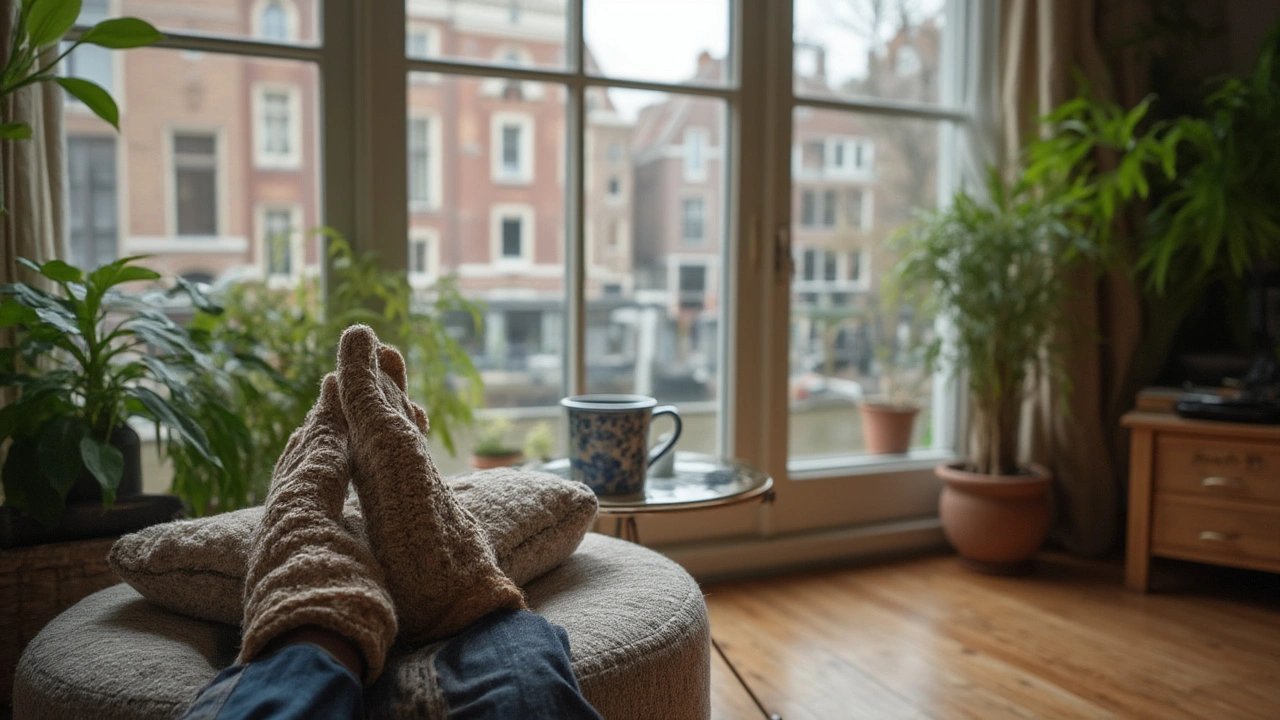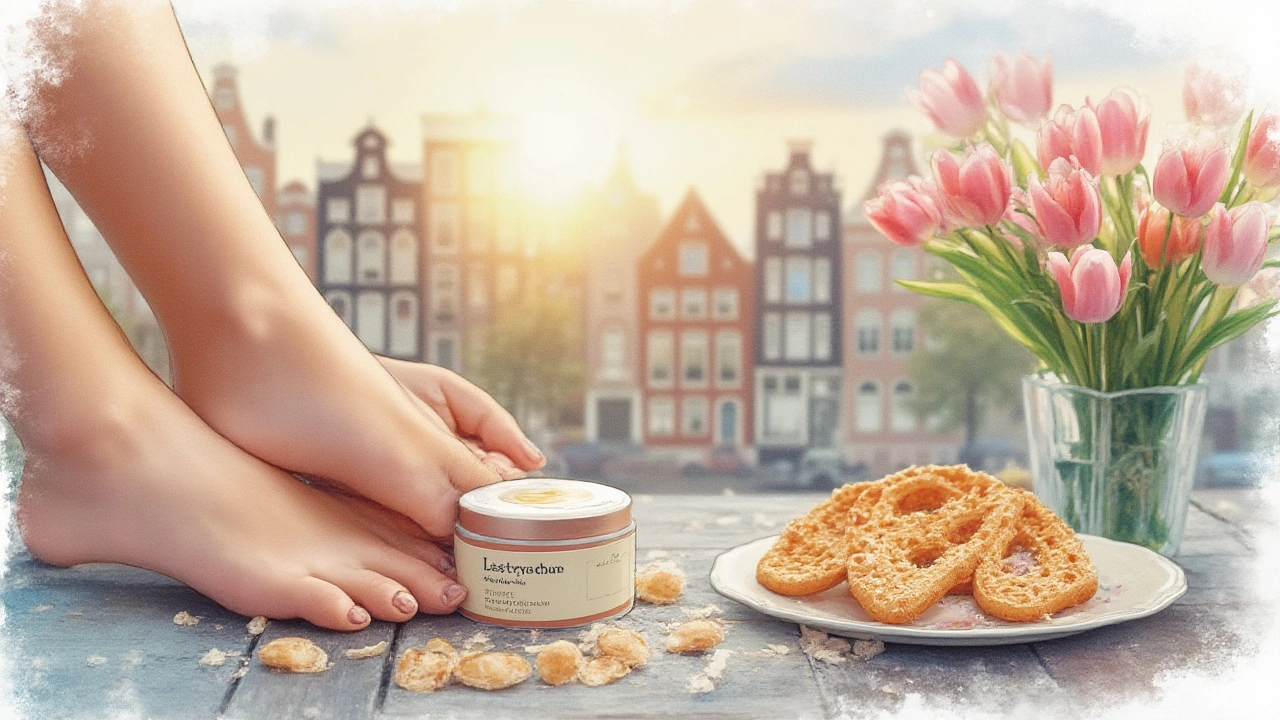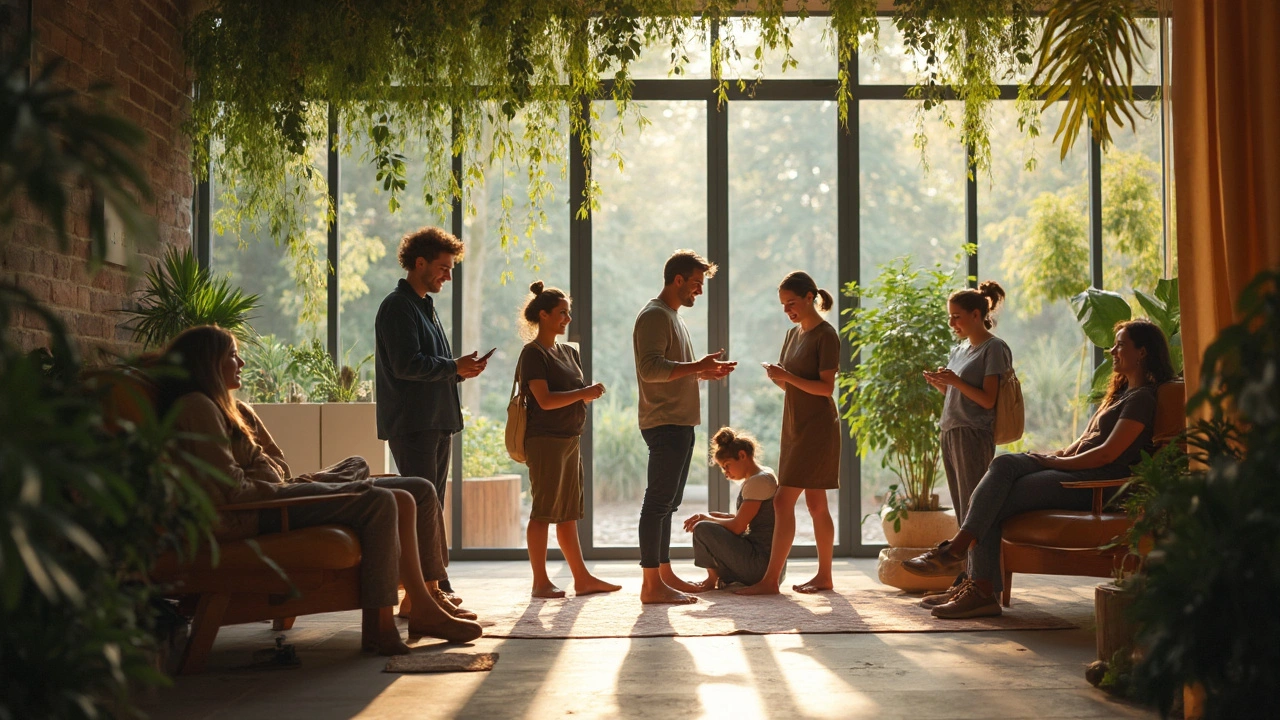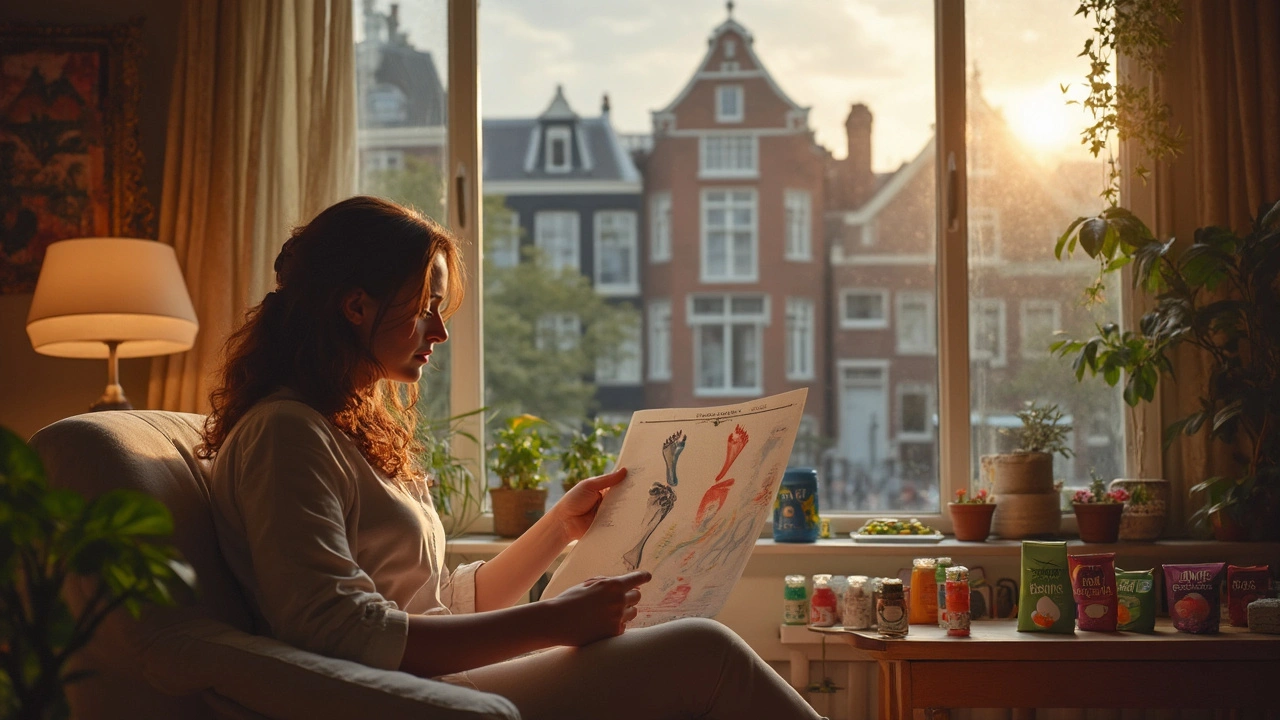Top Foot Massage Techniques for Relief: Amsterdam’s Best Tips

Key Insights: Quick Relief for Tired and Sore Feet
Ever limped home after a long day, dreaming of nothing but liberating your feet from your shoes? You're not alone. Modern life in Amsterdam—climbing canal bridges, cycling all those kilometers, and wandering museums—puts serious stress on feet. Here’s your cheat sheet: treat sore arches to warm water soaks, use your thumbs to apply circular pressure on the heels, and don’t ignore your toes (they love a good stretch). Arnica massage oil works wonders for swelling, and rolling a tennis ball under your foot does more than just feel oddly satisfying—it actually helps with plantar fasciitis pain. Scheduling a professional foot massage in Amsterdam? Opt for Thai or reflexology for comprehensive relief.
Most Effective Foot Massage Techniques – The Direct Answer
Pressed for time? The best foot massage techniques are: soaking your feet, using thumbs and knuckles for deep pressure along the soles, focusing on arch and heel kneading, rolling a ball beneath the foot for myofascial release, gentle stretching of each toe, and finishing with upward strokes toward the ankle to encourage circulation. For fast home relief, go with a warm soak followed by circular pressure with the thumbs on tender points. Professional options in Amsterdam—like Thai foot massage and reflexology—combine all these elements, tailor-made for tired, city-worn feet.

The Ultimate Guide: Foot Massage Techniques for Sore and Tired Feet
Think about your average weekday: maybe you hopped a tram to Museumplein, squeezed through crowds in De Pijp, walked the Jordaan cobbles, or just stood on your feet at work well past sunset. No wonder your feet are yelling at you. The amazing thing is, the right massage can be both a self-care ritual and an instant energy boost—your own secret hack against foot fatigue.
So, why are our feet so sensitive to tension and pain? You might not realize, but each foot crams in 26 bones, 33 joints, and over 100 muscles, ligaments, and tendons. That’s a lot of moving parts. The plantar fascia, a thick band along your sole, bears most of the shock and strain. When you’re on your feet for hours, microscopic tears can develop, causing that all-too-familiar heel ache. That's exactly why specific massage techniques exist: to encourage blood flow, reduce inflammation, and help those micro-tears heal fast.
Reflexology takes it even further. This technique maps internal organs and systems to specific spots on the foot. There’s solid research from the Journal of Traditional and Complementary Medicine in 2022, suggesting targeted foot massages actually lower cortisol (stress) levels and can shorten recovery time after exercise. So if you’re standing behind a bar in the city center or power-walking through Amsterdam Oost, you're not just getting pampered—you’re managing stress and helping your body recover on the go.
Let’s get practical. Whether you’re at home or booking with a pro, here’s a breakdown of the most effective hands-on foot massage steps:
- Warm Soak: Start by soaking your feet in warm water mixed with Epsom salts or essential oils for about 10–15 minutes. This relaxes the muscles and softens hard skin. If you want to go Amsterdam-style, add a few drops of Dutch peppermint oil for a tingly finish.
- Thumb Circles: Dry your feet and apply some lotion or arnica gel. Place both thumbs on the center of the sole and press in small circles up the arch. Go slowly. Stop on tight, sore spots and press gently for a few seconds.
- The Knuckle Glide: Make a loose fist and glide your knuckles from the heel to the ball of the foot. Do this ten times for each foot. The pressure helps push out lactic acid buildup and instantly soothes stiff arches.
- Toe Stretches: Grasp each toe and carefully stretch it back and forth. This relieves cramped toes that have been squeezed all day in boots or heels.
- Ball Rolling: Stand or sit with your bare foot on a tennis or massage ball. Roll it under your foot, applying as much pressure as comfortable. Focus on the arch for stubborn tension and the heel for plantar pain.
- Ankle Rotations: Gently grab your ankle and rotate your foot clockwise and counterclockwise ten times. This helps joint mobility and drainage of fluid.
- Upward Strokes: Finish with both hands, stroking upwards from your toes toward your ankle. This not only feels amazing but encourages blood flow back to your heart, reducing swelling.
If you want a visual, here’s a comparison of common Amsterdam-style foot massage options:
| Massage Type | Key Features | Session Length | Average Price (EUR) | Best For |
|---|---|---|---|---|
| Reflexology | Pressure on mapped zones, stress relief | 30-60 mins | €45-80 | Chronic fatigue, internal balance |
| Thai Foot Massage | Thumb, knuckle, stick pressure, stretching | 45-60 mins | €50-85 | Deep relief, muscle tension |
| Classic Swedish Foot Massage | Oil-based, gentle kneading, upward strokes | 30-45 mins | €40-60 | Relaxation, beginners |
Beyond the massage, simple lifestyle tweaks help, too. Always stretch your calves after long walks, pick shoes that fit well (yes, that means breaking up with those gorgeous-but-painful vintage clogs), and hydrate to reduce swelling. Regular foot massages can actually improve sleep and mood—one Dutch survey in 2023 found participants who received weekly foot massages reported 30% better sleep quality over a month.
Once you start paying attention to your feet, you’ll notice how fast your energy returns—and how much brighter those rainy Amsterdam days feel. Ready for the details? Here’s what goes into a perfect session, where to find them, and insider tips for safe, effective foot massage relief.
Finding and Experiencing Foot Massage Services in Amsterdam
Strolling around town, you’ll soon spot Amsterdam’s famous little massage havens tucked between canals and coffee shops. The city has its fair share of expert therapists, each with their own signature twist on classic techniques. Whether you’re a list-maker or prefer to go with gut instinct, finding the right spot isn’t as hard as you think.
Start with Google Maps or trusted review websites. Plug in “foot massage Amsterdam” or “reflexology in De Pijp/Jordaan/Oost.” Focus on places with recent positive reviews, especially ones mentioning therapists’ skills in handling foot fatigue or chronic pain. Local chains like Thai Smile, Eco Massage, and private practices near Vondelpark are popular for a reason—they keep regulars coming back by offering real results rather than flashy interiors. If you're into holistic wellness, look for spots advertising reflexology or Thai foot massage on their signboards. These services go deeper than quick spa rubs and are more likely to target your specific pain or stress.
Walk-ins are possible, but slots fill quickly on weekends. Booking online usually takes less than a minute—just select your location, therapist (if you have a preference), and duration. Most websites show a live calendar and clear pricing upfront, so there’s zero mystery about what you’ll pay. Expect to pay between €40-€85, depending on session length and therapist experience. Got a favorite masseur? Book ahead—you’ll thank yourself when the calendar is crammed in October after the city’s half-marathon.
What lies ahead during your first session? Picture this: you arrive, stash your bag in a cubby, sit in a reclining chair, and your therapist offers herbal tea with a welcoming smile. They’ll check for any bruises, swelling, or health issues—always mention allergies or recent injuries. Then, you slip off your shoes and socks, soak your feet in a warm aromatic bath, and settle in for 30-60 minutes of pure bliss. Therapists use a mix of smooth oil or powder (some still swear by the classic Thai balm loaded with menthol). With strong, confident hands, they’ll start with the heel and work upward, paying special attention to stress points. Expect thumb glides along the arches, knuckle presses into tender spots, stretching each toe, and ending with rhythmic upward strokes on the ankles and calves.
Don’t be shy to speak up if the pressure feels too much—or too little. Some clients prefer gentler Swedish technique, while others crave the deep, almost-intense pain-relief of traditional Thai footwork. After the session, there’s usually a quick cleanup—hot towel wipe and soothing tea. Most people leave feeling light, energized, and strangely optimistic. Curious about the health effects? Some Amsterdam-based podiatrists have observed real drops in swelling after single sessions, especially in cyclists after long rides or workers on their feet all day.
One common question: what’s the difference between a regular massage and a specialist foot massage? Foot specialists blend anatomy knowledge with intuition, often adjusting techniques on the fly if you mention plantar fasciitis, old injuries, or chronic cramps. If you book at a certified practice (look for Dutch wellness association memberships mentioned online), you’re in safe, skilled hands—plus, many offer loyalty deals if you find yourself becoming a foot massage enthusiast (trust me, it happens faster than you think).
Need some tips for DIY between pro sessions? Freeze a water bottle and roll it under your bare feet for rapid swelling relief, or use a lightweight wooden massage stick (these sell for less than €10 in local wellness shops). Some people keep a tennis ball at their desk, sneaking in a quick roll while answering emails. A dab of peppermint oil lotion adds a fresh twist—especially after rainy forecasts or long city treks.

Expert Tips, Safety Checks, Prices, and a Handy Comparison Table
Before you book or start your own foot massage, there are a few things everyone should know. Not all massages are created equal; the difference between a blissful recovery and hobbling away sore depends on skilled hands and communication. Here’s what seasoned locals and therapists suggest:
- Always check for open wounds: Foot massages shouldn’t be performed on broken skin, blisters, fungal infections, or deep cuts. Wait until these heal.
- Be honest about pain: If you have bunions, recent sprains, or severe swelling, tell your therapist. They can adapt their technique instantly.
- Before you go: Drink water—hydrated muscles are easier to work.
- After the session: Give your body an hour or two before vigorous activity. Gentle stretching helps lock in the benefits.
- Ticklish? No problem: Tell your therapist—there are ways to adjust technique and pressure for sensitive feet.
- DIY at home: Don’t overdo the pressure—pain isn’t a sign you’re doing it right. Light, repetitive stretches often work best for chronic soreness.
- Allergies: If you react to oils or balms, ask for unscented coconut or almond oil.
Want to compare foot massage with other popular techniques available in Amsterdam? Here’s a quick table for easy decision-making:
| Type | Key Benefits | Session Length | Best For | Price Range (EUR) |
|---|---|---|---|---|
| Foot Massage | Reduces swelling, boosts energy, pain relief | 30–60 min | Sore or tired feet, plantar fasciitis | €40–85 |
| Head Massage | Relieves migraines, reduces stress, relaxes neck | 15–45 min | Tension headaches, desk workers | €25–65 |
| Full Body Massage | Deep relaxation, improved circulation | 60–90 min | Whole body stress, muscle stiffness | €60–120 |
Got burning questions? You’re not the only one. Here’s what people ask the most:
- Does foot massage really help with plantar fasciitis? Yes, when done right. Regular sessions and targeted stretching speed up healing and control pain.
- How often should you book foot massages? For heavy activity or chronic pain, twice a month helps. For casual relaxation, monthly or after long city walks does the trick.
- Can you do it yourself? Sure, as long as you keep the pressure gentle and focus on problem spots.
- Is it safe when pregnant? With a licensed therapist, yes, but always make sure they're trained in prenatal techniques.
- What about during athletes’ training or recovery? Absolutely. It speeds up recovery, lowers muscle soreness, and freshens you up for the next training block.
So, tired feet, aching arches, and you’re tempted to take matters (literally) into your own hands—why not try one of these techniques tonight? Or if you’re in the city, book that slot and experience what a real Amsterdam foot massage can do for your day. Your future energized self will thank you.


